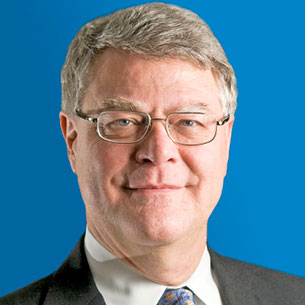I work at Michigan State University, but I get my cancer care at the University of Michigan. I love both institutions, but when it comes to football, I am MSU Spartans all the way. If you are not from the Great Lakes State, you may not have heard about the outcome of our October 24 match-up. I will tell you about it now. In case you are not quite as interested in the game as I am, I will skip description of the first 59 minutes and 50 seconds.
University of Michigan led the whole game and was ahead 23 to 21 with 10 seconds remaining. It was 4th and 2 on the MSU 47-yard line. U of M was in possession and decided to punt. MSU sent in their special team, whose members saluted each other, as always, with the word “Believe.” MSU rushed all 11 men. The punter bobbled the snap and tried to get off a kick, but was hit by an MSU rusher. The ball flew into the hands of another MSU player who, with some crucial blocking, ran it in for a touchdown as time ran out. Final score: Spartans 27 and Wolverines 23.
So (in addition to gloating) why am I sharing all this with you? I am sharing it because ESPN runs minute-by-minute odds of victory probability for each team. For the whole game the odds favored U of M. As the last play started, the odds quoted for an MSU win were 0.2%. Ten seconds later, the odds of an MSU win were 100%.
When I was first diagnosed with stage 4 stomach cancer in 2010, one of the first things I did was check out the ominously named SEER Database (Surveillance, Epidemiology, and End Results), and I saw that stomach cancer had a 30% 3-year survival probability and a 10% 5-year survival probability. This was the aggregate figure for all stomach cancers, stage 1 to 4. At the time, I could not bring myself to look up the stage-specific survival probabilities, but I did consider not bothering with treatment. One of the most useful things that any of my doctors said was, “Your real survival probability is either 0 or 1. We just do not know which.”
Fortunately, I did decide to go with aggressive treatment. When I reached the 3-year survival mark, I told my long-suffering oncologist (Mark Zalupski, a U of M fan), “I am not at all sure that I have beaten cancer, but I am sure that I have beaten the point spread.”
Early in my illness, I sort of made a deal with God (although I, of course, realize that you are not supposed to do that). The deal was, “If I am not a hospice patient in a year, I will be a hospice doctor.” I did, much to my amazement, survive and did become a hospice doctor for a year. I was really impressed, and touched, by the services and kindness provided by hospice. When the time comes, that is where I plan to end my days.
But how will I know when the time comes? I will be eligible for hospice care as soon as two doctors have agreed that I have less than a 50% chance of surviving another 6 months. I am not planning, though, to stop active treatment as soon as I think my 6-month survival probability is 49%. But will I go into hospice care when my 6-month survival probability looks like 30%? Or 10%? Or 0.2%? I do not really know.
It seems to be my fate to be part of conflicting communities. I have already mentioned being part of both the MSU and U of M communities. I am also part of both the “cancer survivor community” and of the “hospice community.” A motto of the survivor community might be, “Never give up, never give up, never give up.” A motto of the hospice community might be, “Know when to stop trying to cure your condition and when to start focusing on palliative care.” You can readily see some of the conflict in ethos.
I am, frankly, concerned about the whole concept of value in cancer care. Will insurance stop paying for “futile” care when the probability of success is less than 50%, less than 30%, less than 10%, less than 0.2%? Who will make the calculations and who will make the decisions?
As doctors, we can make the prognostic calculations for patients, but we cannot make the decisions about what to do with those probabilities. I think that we need to have respect for even seemingly irrational hope. I do not think that we often tell patients straight out that there is no hope, but I am afraid that we can present the possibility of hospice in a way that seems to say that. When active treatment does not seem to be increasing the chances of a better outcome, but does seem to be increasing suffering, perhaps we can communicate that miracles can happen in hospice, too. Both I and my favorite football team have experienced miracles (AKA statistically quite unlikely positive outcomes). I never, ever, want to give up on the possibility of the miraculous.

